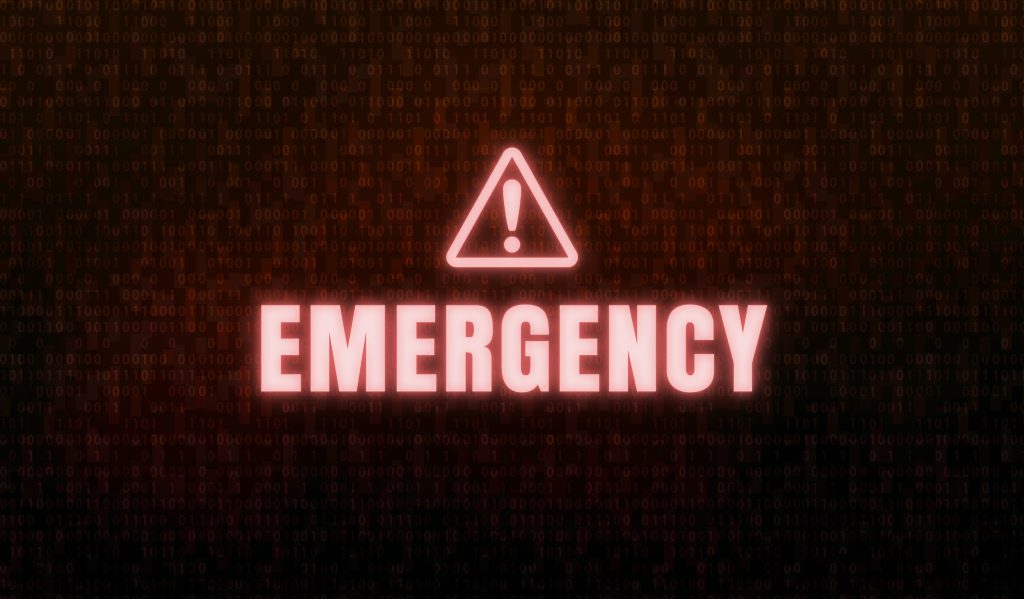
You’ve done the responsible thing by creating a living will or a Do Not Resuscitate (DNR) order. These medical directives are supposed to be your voice when you can no longer speak for yourself, ensuring your end-of-life wishes are respected. However, in the heat of a medical crisis, first responders and emergency room doctors face immense pressure to preserve life. There are several critical situations where they can, and often must, legally bypass your documented wishes. Understanding these exceptions is vital for ensuring your planning isn’t in vain. It allows you to take extra steps to fortify your choices against the chaos of an emergency.
1. The Document Is Not Available
Paramedics and ER staff cannot honor instructions they do not have. If your medical directives are locked away in a safe deposit box or filed with an attorney, they are useless in an emergency. First responders must act immediately and will default to life-saving measures unless a valid DNR or similar state-approved form is physically presented to them. Without the document in hand, their legal and ethical obligation is to try to save your life. This is the most common reason why well-thought-out medical directives fail when they are needed most.
2. The Language Is Ambiguous
A living will that uses vague terms like “no heroic measures” or “if there is no hope of recovery” can be problematic. What one person considers heroic, a doctor might see as standard procedure, and determining “hope of recovery” is highly subjective in a fast-moving crisis. If the instructions in your medical directives are not crystal clear and specific, medical professionals may choose to err on the side of caution. They can legally override ambiguous language to provide treatment until your condition and prognosis are better understood.
3. A Pregnancy Clause Is Invoked
This is a shocking exception for many: in numerous states, an advance directive may be partially or completely invalidated if you are pregnant. The law often prioritizes the life of the fetus, regardless of the mother’s previously stated wishes. These statutes can require medical professionals to provide life-sustaining treatment until the fetus is viable, directly bypassing the patient’s medical directives. This exception varies significantly by state, so it is crucial to understand the specific laws where you live.
4. To Stabilize for Assessment
In an emergency, the immediate goal is stabilization. A doctor in the ER may perform procedures that seem to contradict your medical directives with the sole purpose of keeping you alive long enough to make an accurate diagnosis. They need to understand the full picture of what is happening before they can determine if your condition meets the criteria outlined in your living will. This can mean being put on a ventilator or receiving other temporary life support, even if your directive says you would refuse such measures.
5. A Family Member Contests It
When a family member or your healthcare proxy vehemently objects to your medical directives at the scene, it creates a legal and ethical dilemma for caregivers. To avoid a potential lawsuit or a violent confrontation, medical teams may opt to provide life-sustaining treatment. The conflict among loved ones can cause doctors to pause and seek legal or ethical consultation, and in the meantime, treatment will continue. This underscores the importance of having clear and firm conversations with your entire family about your wishes.
6. It’s Not a State-Approved Form
While a living will explains your wishes, it is often not a direct medical order. Many states have specific forms, like a Physician Orders for Life-Sustaining Treatment (POLST) or Medical Orders for Life-Sustaining Treatment (MOLST), that are considered actionable medical orders. Emergency responders are trained to look for and honor these specific documents. If your wishes are only in a generic living will, they may not have the legal authority to withhold treatment based on that document alone.
7. Suspected Suicide Attempt
In cases where a medical crisis is the result of a suspected suicide attempt, medical professionals will almost always bypass any pre-existing medical directives. The guiding principle is that the person’s desire to end their life may have been the result of a treatable mental health condition. Therefore, their advance directive is considered temporarily invalid, and the immediate priority is to provide life-saving treatment. The focus is on preserving life to allow for psychological evaluation and support.
8. During Anesthesia or Surgery
When you consent to surgery, you are also giving implied consent for the surgical team to handle unexpected emergencies. If a life-threatening complication arises while you are under anesthesia, the surgeon has the authority to perform necessary procedures to save you. This can override pre-existing medical directives because the situation is a direct, unforeseen consequence of the procedure you agreed to. The assumption is that you would want the team to manage the immediate crisis.
9. You Change Your Mind While Conscious
Your most recent wishes always take precedence. If you are conscious and able to communicate during a medical emergency, what you say at that moment can override anything you have written down. If you have a DNR but, in a moment of panic or pain, ask for help or consent to treatment, medical staff are legally obligated to honor your current request. Your written medical directives are for when you cannot speak for yourself, but your present voice is the ultimate authority.
Ensuring Your Final Wishes Are Heard
While these exceptions can be frightening, they highlight the critical need for proactive and thorough planning. Simply signing a document is not enough; you must ensure the right people have it and that it is legally sound and unambiguous. This means using state-approved forms like a POLST when possible, wearing a medical alert bracelet, and having frank discussions with family and your healthcare proxy. Reinforcing your medical directives with these practical steps gives you the best chance of having your voice heard, even in the most critical moments.
Have you taken steps to make your medical directives clear and accessible? Share your tips below!
Read More:
7 Medical Devices Banned for Mental Health Treatment in Certain Countries
7 Medical Tests You Didn’t Know You Could Request for Free

Latrice is a dedicated professional with a rich background in social work, complemented by an Associate Degree in the field. Her journey has been uniquely shaped by the rewarding experience of being a stay-at-home mom to her two children, aged 13 and 5. This role has not only been a testament to her commitment to family but has also provided her with invaluable life lessons and insights.
As a mother, Latrice has embraced the opportunity to educate her children on essential life skills, with a special focus on financial literacy, the nuances of life, and the importance of inner peace.
